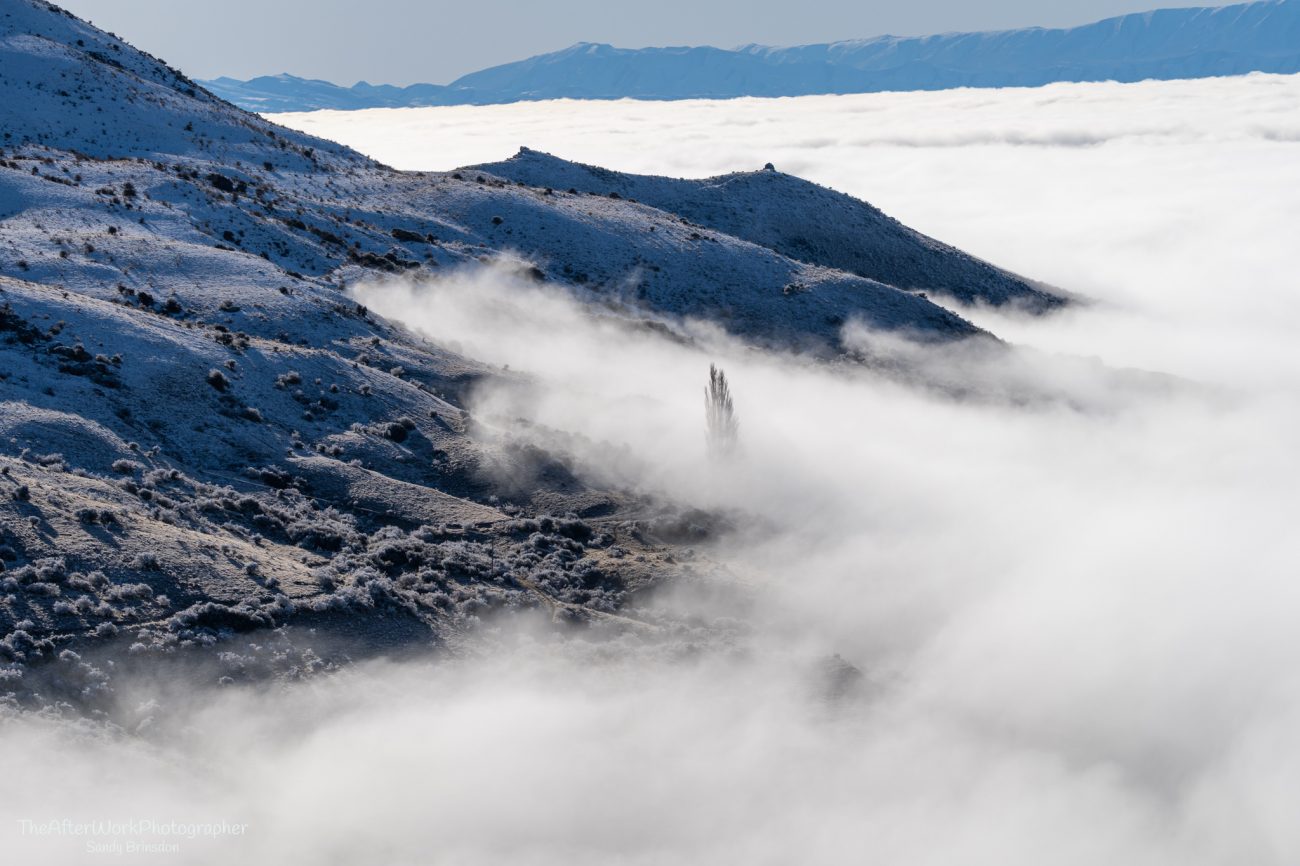
Mt Difficulty Ascent 44km 2023
Date:
June 10, 2023Here we go again. Having participated in the Mt Difficulty Ascent 44km ‘adventure run’ in 2019 and 2021, this year would be my third running of the event. It’s without a doubt one of the harder ‘runs’ you can do. The race director likens it to more of an ‘extreme mountain mission’ as there’s as much hiking and climbing (literally) as there is running. It’s the morning of the race and Esther and Pete have just left the house for the start line at Mt Difficulty Winery. It’s 7.30am and I’m sitting on my bed reading the pre-race briefing whilst waiting for Dr Andrew Stanley to finish toileting for the umpteenth time. At Highland Events we pride ourselves on not cancelling due to bad weather. Our motto is ‘The worse the weather, the greater the adventure’. The course starts off easy and quickly gets harder and then way harder and finally ridiculously harder. I sense not much has changed. When Dr Stanley and I finally head outside, we’re shocked to see that our rental car is gone! “Oh my God. Neena has left without us! She must’ve thought that we left with Esther and Pete!” I exclaim. At first Dr Stanley surveys the street thinking Neena is playing a practical joke on us until he too realises the gravity of the situation. It’s 7.40am and our race is due to start in 20 minutes. We’re carless standing on the side of the road and taking into consideration Dr Stanley’s skin tight shorts, unlikely to be picked up. Without much certainty that she would even answer, I suggest to Andrew that he should give Neena a call. Although it felt like an eternity at the time, within ‘minutes’ the headlights of a briskly moving car can be seen heading our way. A familiar Jeep Cherokee with a flustered looking Dr Neena Kalsi stops next to us and we promptly get in. Despite the drama, we managed to arrive at the Mt Difficulty Winery with about 10 minutes to spare. As we start walking towards the start line, I realise instantly that something doesn’t feel right. “F***! I’ve left my trekking poles at home” I blurt out. I develop a sick feeling in my stomach. I knew that there wouldn’t be enough time to turn around and get them now. Here I am about to do one of the toughest events in the country and I’ve left one of my trump cards next to my bed at home. Dr Stanley chimes in with some Charles Darwin inspiration. “It’s not the strongest that survives, nor the most intelligent, but the one most adaptable to change”. He was right of course. I had to get my mind set right. This will be a challenge. This is good training without them. You’ve done harder events before. Without too much time to ruminate any further, the race began. We headed out towards the Bannockburn Sluicings and vineyards surrounded by that familiar smell of wild thyme again. Here we go again. Mt Difficulty awaits.
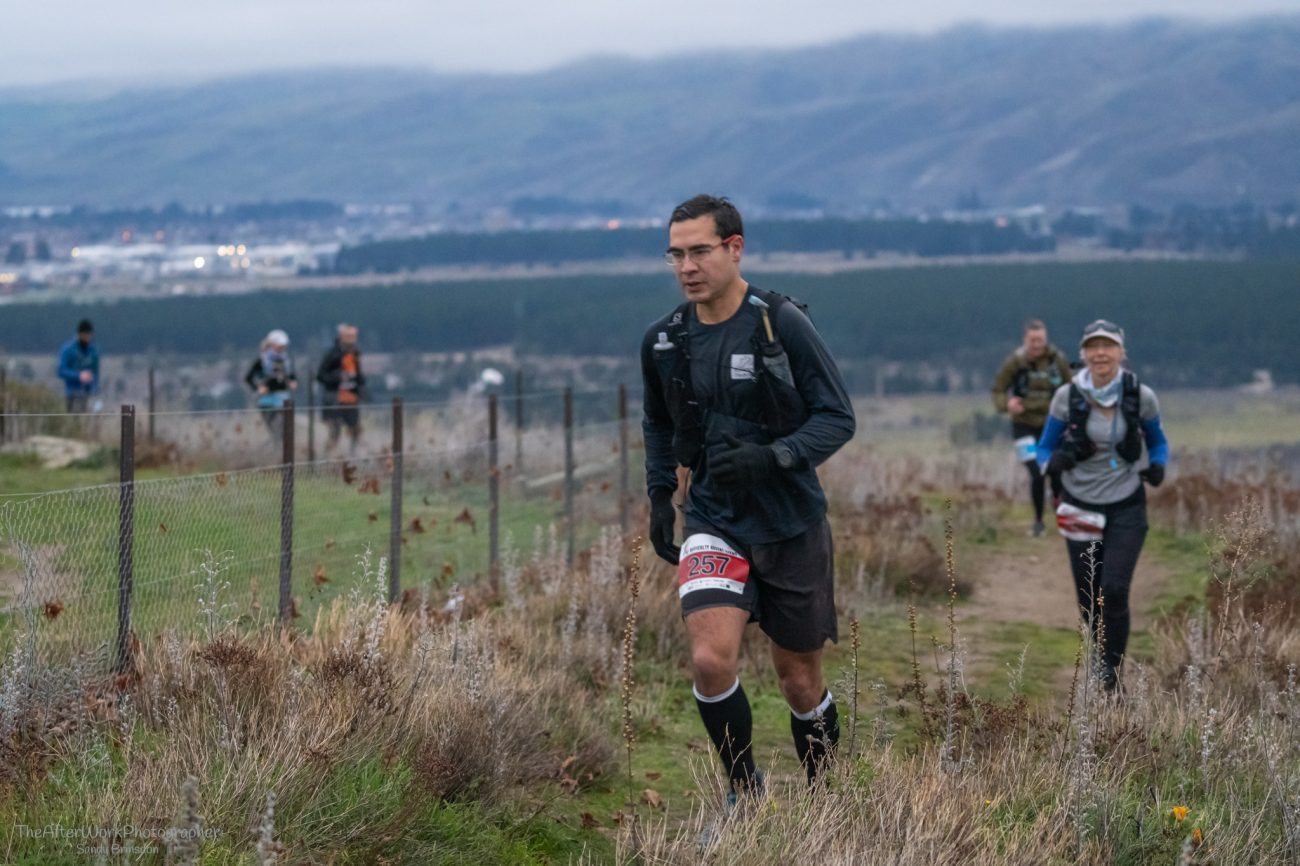
Running ‘hands free’ early on in the race
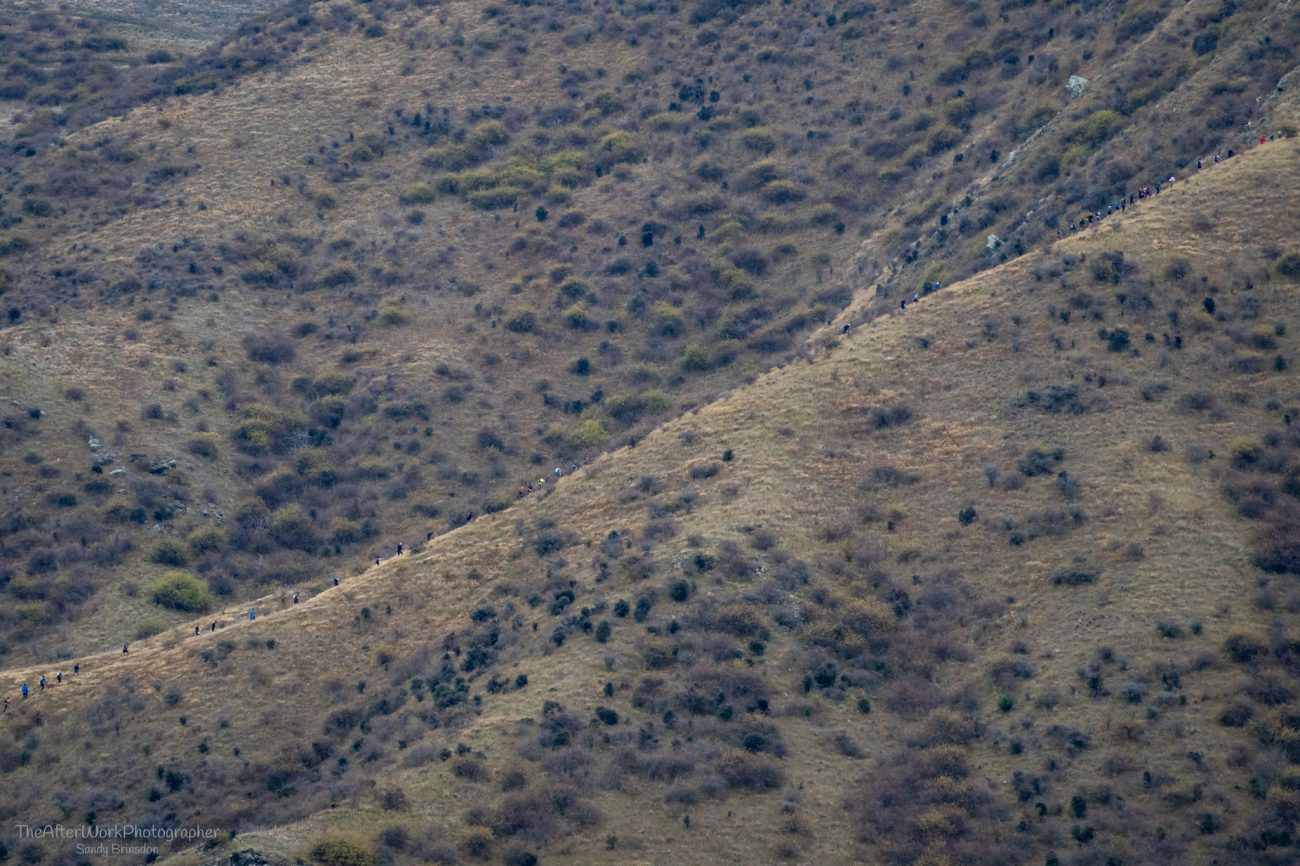
The ‘warm up’ over Nipple Hill
As I climb the first major ascent up Nipple Hill (240 metres), I take a lung full of crisp morning air. I’ve already built up a light sweat and my calf muscles are starting to burn. Without my trusty trekking poles, I can feel a lot more load going through my legs that usually my upper body would absorb. Without my poles, I’m a lot more conscious of how I’m moving and I tune into my legs more. As my calves start to burn, I ascend sideways up the hill to shift more load to my glutes. As I descend, my centre of mass is a lot lower and I’m forced to shift more load onto my heels. I was forced to adapt. And adapt quickly. In the last 200 years in particular, our world has changed so much! Human kind evolved from Africa 2.5 million years ago. For 2.5 million years, we fed ourselves by gathering plants and hunting animals. We were physically active by virtue of our life style. About 12 000 years ago, we began to manipulate the lives of a few animal and plant species. This was the beginning of the agricultural revolution (farming, crops). Permanent settlements arose for the first time. Humans still worked the land but we roamed less and lived a village life. The industrial revolution began about 200 years ago. Machines replaced human labour and we began to manipulate energy sources to power industry and transportation. Work became less varied and more tedious/repetitive and we started to see the beginnings of what we know today as ‘occupational overuse syndrome’ or OOS. In the last 200 years, working harder was replaced by working smarter as science and technology really started to take off. More so, in the last generation, we’ve witnessed transformational change that even 50 years ago no one could’ve imagined. I can now work from home, get all my shopping delivered at the click of a button, and do everything on my iPhone. Physical activity is dying a slow death and even the humble bike and scooter is now motorised. Soon robots will do all our physical work for us and artificial intelligence (AI), all our thinking. To put the above into a time line perspective, we’ve been hunter gatherers for 99.5% of our history and a society of increasing comfort and ease for 0.5% of our history. If you held a piece of string in both hands, every visible portion of that string would represent our hunter gatherer history. Though we’re living in a modern technological world, our DNA still thinks we’re in the savanna. Tucked away in our offices eating our processed food whilst hunched over our computers, our physical activity levels are declining significantly. Our obesity levels are rising exponentially. And our physical and mental health is paying the price for it. A wise person once said, “Our technology has exceeded our humanity” – Albert Einstein (1879-1955). I can’t even imagine what he (or even Charles Darwin) would say now. I’ve always said that getting to the start line is the hardest part. I’ve since learned that fitting exercise into our busy monetary and materialistic life styles and making it a routine (so you can get to the start line) is even harder. I can understand how exercise is challenging from a DNA perspective. We evolved to conserve energy and avoid unnecessary physical activity so exercise can be unnatural for some. However, this needs to be balanced with the fact that we also evolved to move. When we were hunter gatherers, the mere act of staying alive met our physical activity requirements. But we can’t rely on our environment to keep us physically active anymore. I’d like to think that we’re moving away from calling sedentary people ‘uneducated’. I’d like to think that the benefits of exercise are as well known as the risks of smoking. Yet smokers continue to smoke and sedentary people continue to remain physically inactive. Maybe sedentary people are poor prioritisers or poor planners amongst other things? If so, how much of this is an ‘individual/self-leadership’ problem rather than a medical problem that doctors are supposed to solve? Because until a scientist can pack all the benefits of exercise into a magical pill, you’re going to have to take the bull by the horns and prioritise and plan physical activity into your everyday life. You’re going to have to adapt. And sweat it out! How much do you value your life? How much do you value your family’s lives? Maybe I could reframe Charles Darwin’s famous quote into “It’s not the most comfortable who survive, nor the one who seeks ease, but the one most adaptable to change”.
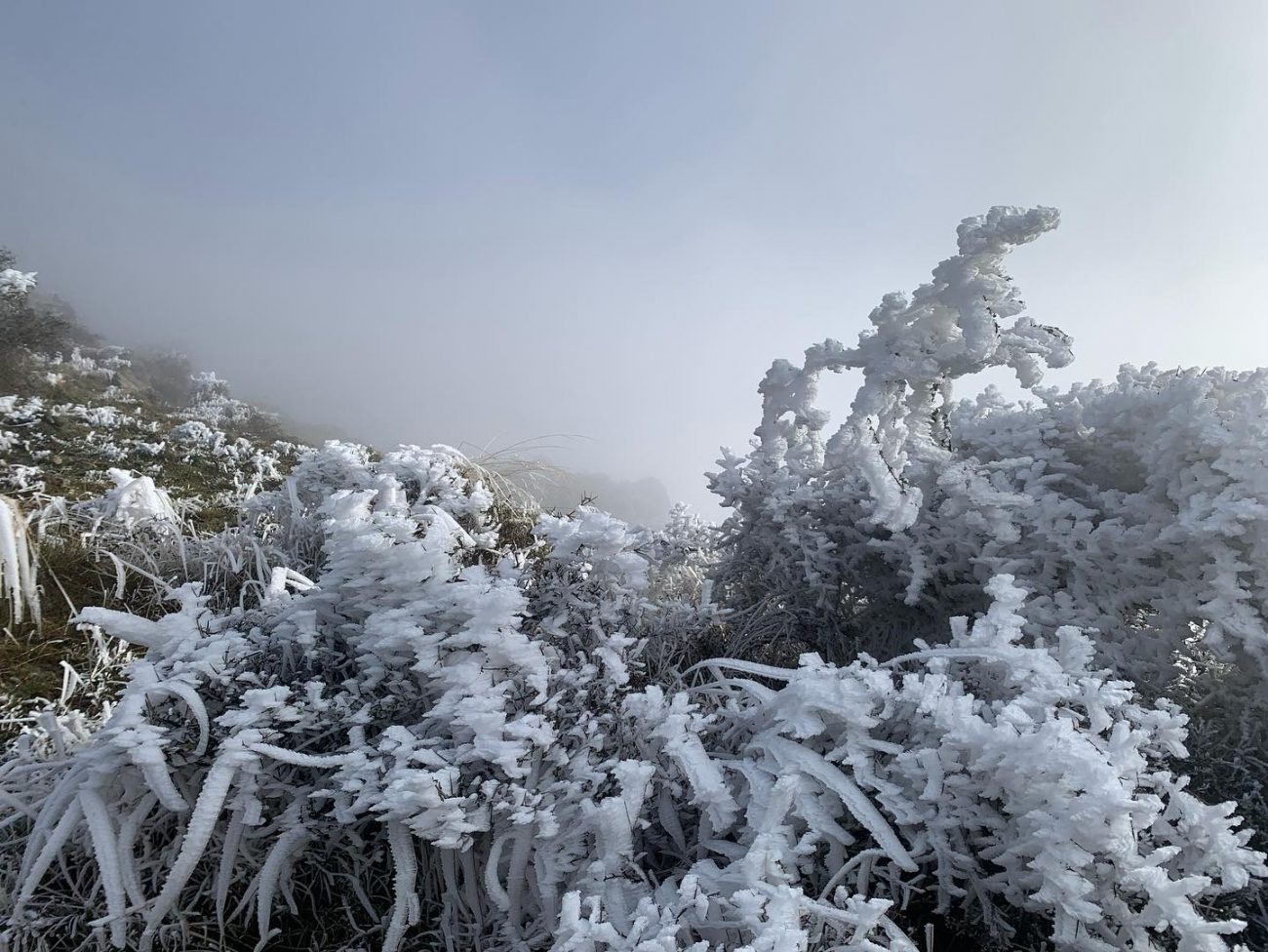
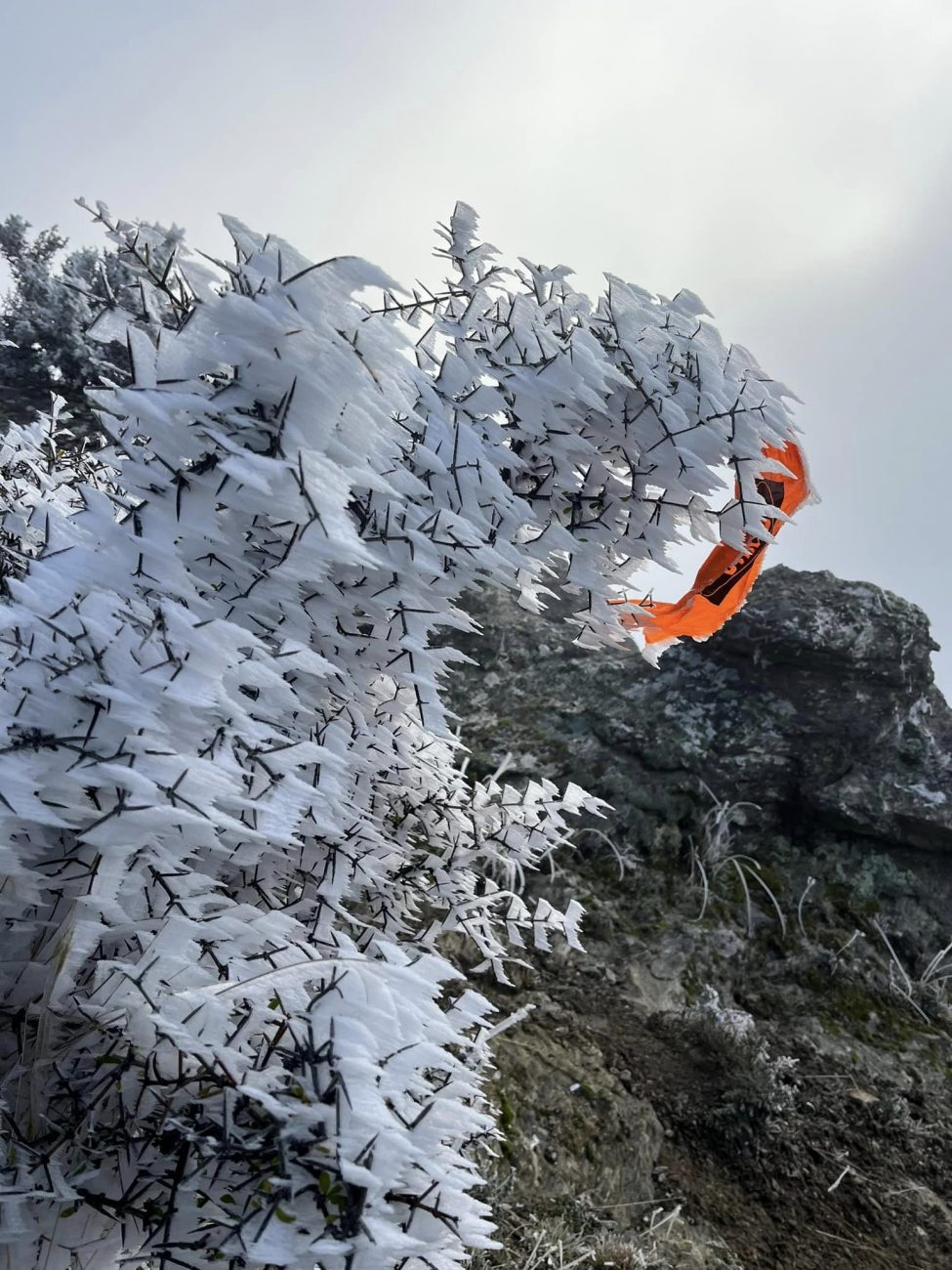
Hoar frost and orange markers
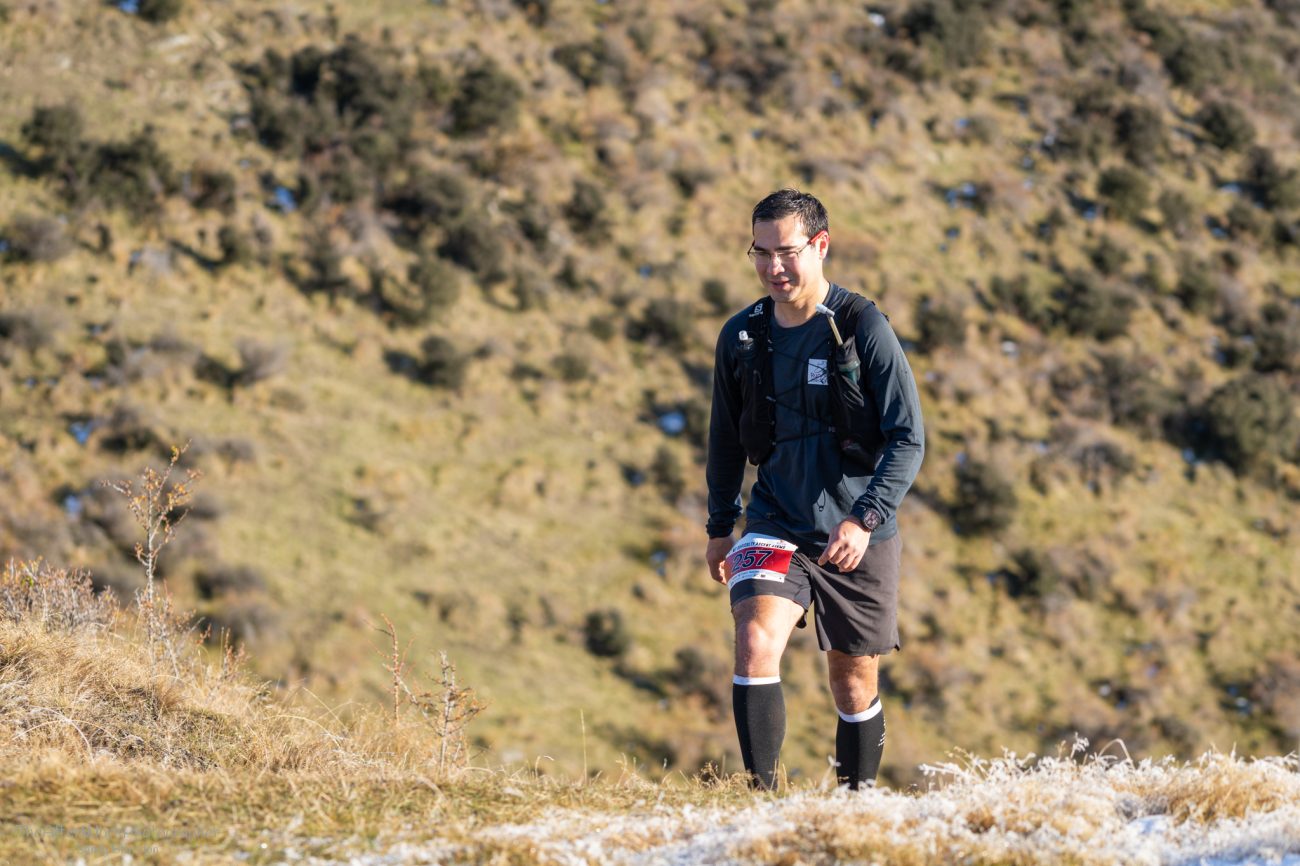
Running along the ridge line past the water course
Crouching and with my centre of mass as close to the ground as possible, I descend Nipple Hill. I can feel the dry and rocky soil slip under my feet so I crouch even lower. Without my trekking poles, I use my arms for balance whilst my hands grasp onto nearby rocky outcrops to help control my descent. However, despite all care, I take a mighty slip and my right wrist takes the brunt of the fall. Half my palm and my ring and little fingers go numb. Great. There goes my ulnar nerve. I rise to my feet and continue with my tail firmly between my legs all the way to the bottom. The next section on undulating 4WD track along the Kawarau River is all runnable until I reach the second major climb of the course. An unnamed rocky hill side with an average 50% gradient i.e. a 500 metre climb over 1km. The aim of the game is to follow the orange markers attached to the Matagouri bushes all the way up to the sky. Other than sporadic goat tracks, the rocky hill side is essentially trackless. At times the ground is literally at eye level as I crawl on all fours upwards. Whilst climbing, another runner seemingly deprived of oxygen stops to suck in a few big ones. “So Terry [race director] reckons he takes his kids up here” he says astonishingly. “What type of bloody goats are they? Chamois? Tahr?” We keep climbing until eventually the bare Matagouri bushes are now covered in ice crystals (hoar frost). Eventually, we pierce the cloud layer. Above the cloud layer, it’s a nice downhill gradient along the water race and down a ridge line. I manage to catch up with Dr Stanley and Neena just before the ‘cautionary’ rope section. I still clearly remember snapping my trekking pole clean in two along the rope section in 2019 so I steady myself. I watch on amusingly as both Stanley and Neena scramble down utilising the ‘5 points of contact’ method (i.e. all 4 limbs and one’s bottom contacting the ground). However, in mere seconds, my smugness is gone as I come crashing down onto my bottom and left wrist (my wrist is still sore three weeks later as I write this). Man I miss my poles. We all then descend the rope section holding onto the rope like our lives depended on it. When I reach the aid station at the bottom, I top up my food/drink and compose myself for the nastiness that lies ahead. Neena turns right at the aid station for the remainder of the 25km course while Dr Stanley and I turn left for the remainder of the 44km course. We’re back running along the Kawarau River again. But this time, the third major climb of the course, Mt Difficulty itself awaits us. When I reach the base of Mt Difficulty, it’s around midday so it’s taken me about 4 hours to do 18km. If you thought I couldn’t get any slower, then you’re wrong! The climb up Mt Difficulty is the worst of them all! It’s a painful, slow grind. It’s a 1020 metre climb over 3km. By now I’m feeling it and my legs have more than a slight tension so I scan the ground looking for a makeshift trekking pole. I eventually find a suitable stick that’s strong enough and free of thorns and carry on upwards. Oh my God, I’ve become one of those weirdos who uses a stick, I reflect. Going up Mt Difficulty is a slow procession. I interchange my stick freely between left and right hands depending on the terrain. Other times I have to grab onto thyme (or any other graspable bush without thorns) to haul myself up the mountain side. Sometimes I’m back on all fours crawling again. As I continue upwards, suddenly it’s like I’ve crossed an imaginary line into another world that’s been painted by a feathery hoar frost again. As I climb higher again, I eventually breach the clouds until I’m above the cloud line in an inversion layer basking in sunshine. Higher again, and the hoar frost turns into genuine snow. Nearing the top and having served its purpose, I ditch my trusty stick. Farewell good friend. I hope you enjoy your new home. To my amazement, the aid station at the top of Mt Difficulty (20.5km) has a small pie warmer powered by a generator. I help myself to a delectable chicken pie and carry on. That was unexpected. Terry must be getting soft. For the remainder of the run, Dr Stanley and I run together. The last 23km of the course is generally runnable (if you still had any running legs). However, running through thick snow is no conventional running activity and I’ve never run through so much snow in my life. My unfamiliarity in this environment was laid bare when I attempted to cross an iced over stream and came thundering down onto my left hip. I’m sure that if I was a 60 year old osteoporotic woman, I would’ve fractured my neck of femur such was the impact. After my third major fall, I was quite content to take it easy and simply get to the finish line in one piece. The course packed a few punches between 28-35km so there was a bit of walk/run transitioning. The final 8km was mainly downhill but no time to clock off as the snow/ice hazards were now replaced by equally hazardous wet grass and slippery mud. When Dr Stanley and I reached the Bannockburn Sluicings again, we knew we were close to home. We eventually crossed the finish line together around 4.30pm, 8 hours and 30 minutes after starting. Having now completed Mt Difficulty on three occasions (with two trekking poles, one trekking pole, and no trekking poles), I can conclude that poles are massively helpful on this course. Trekking poles are great for climbing and equally effective whilst descending as there’s less quads braking. Poles can offload your legs during the run saving you some gas in the tank for a strong finish. They also reduce your falls risk due to your extra points of contact with the ground. A friend of mine likes to give me ‘stick’ and calls them my ‘old man poles’. Mate, you just keep running your road marathons. Off road runs are an entirely different beast. Mt Difficulty is on another stratosphere. I’m just adapting to off road running. I’m just evolving. Running is Medicine.
Thanks to TheAfterWorkPhotographer for most of the photos.
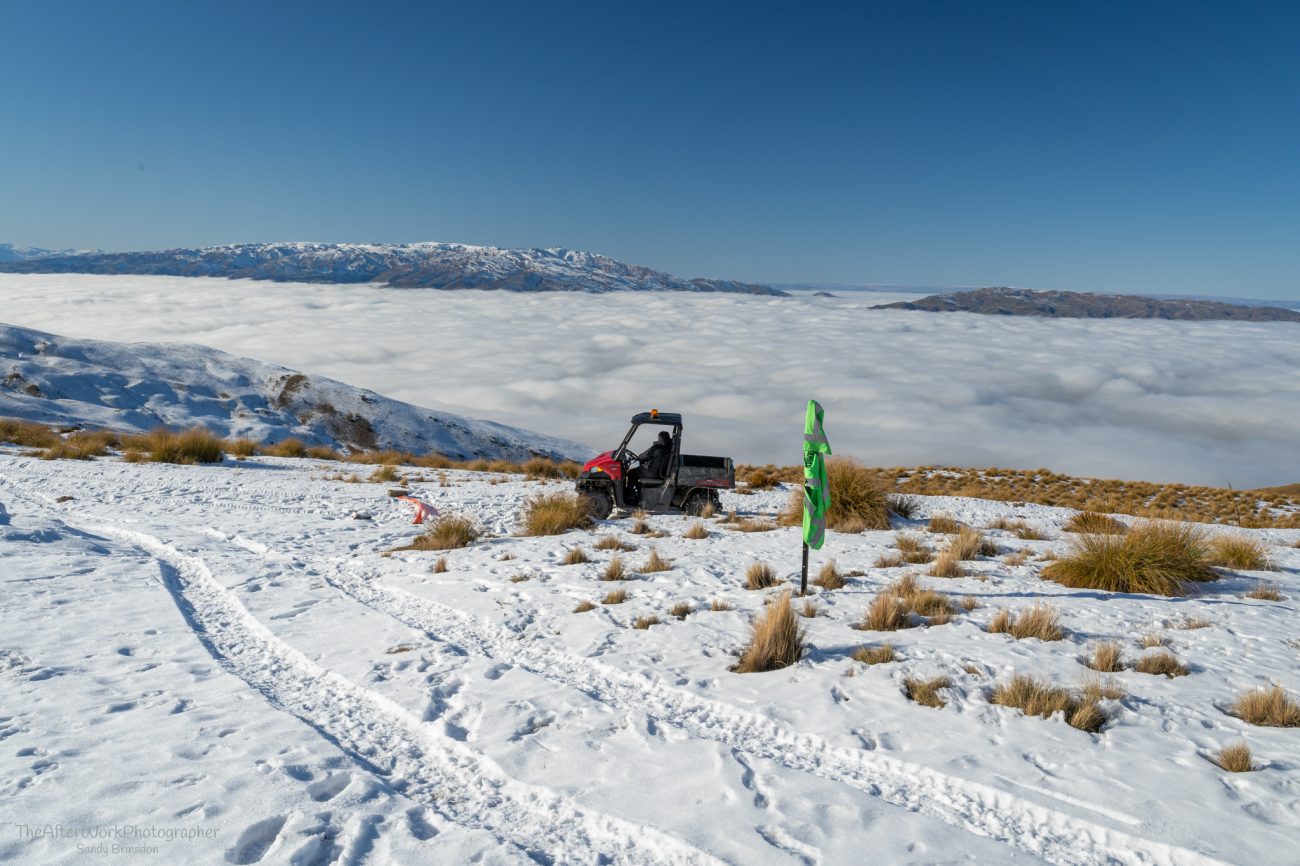
Running through snow at the top of Mt Difficulty
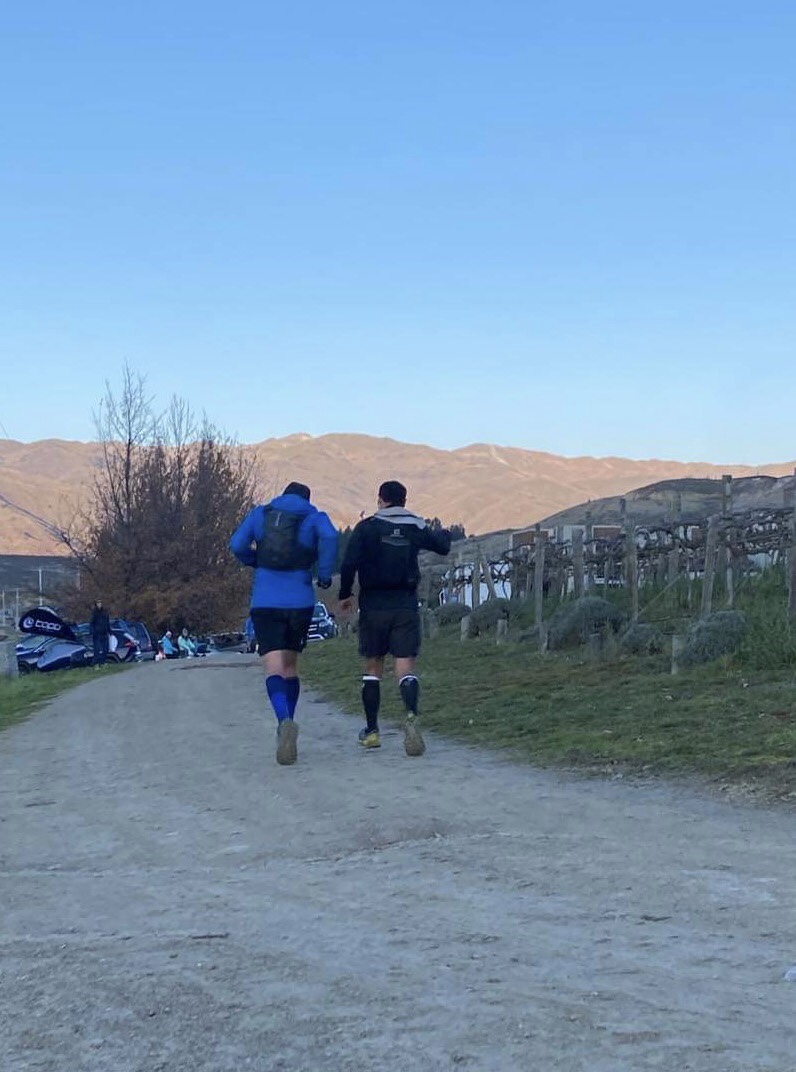
Heading towards the finish line with Dr Andrew Stanley
It’s not the strongest that survives, nor the most intelligent, but the one most adaptable to change.
Charles Darwin
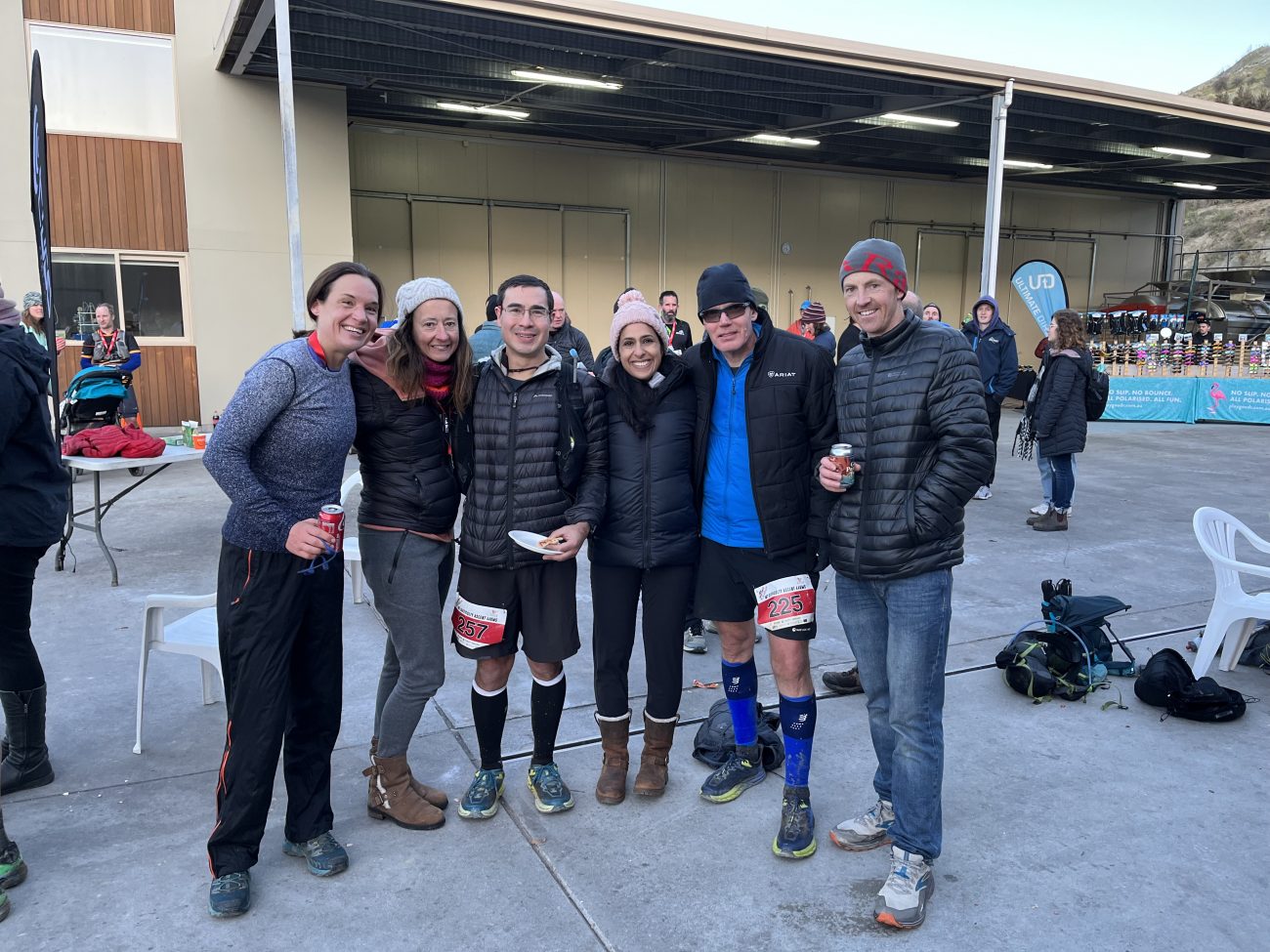
Rugged up at the finish line (left to right: Claire, Esther, myself, Neena, Andrew, and Pete)
